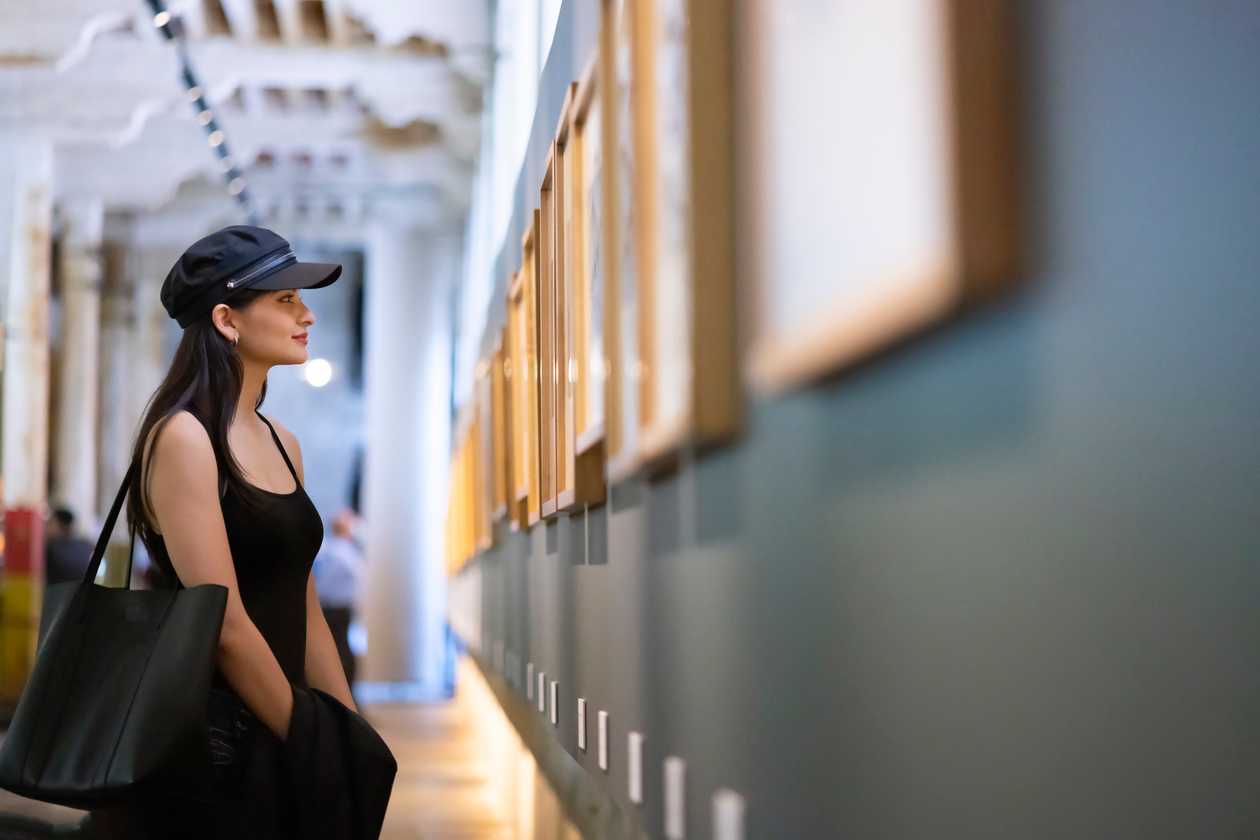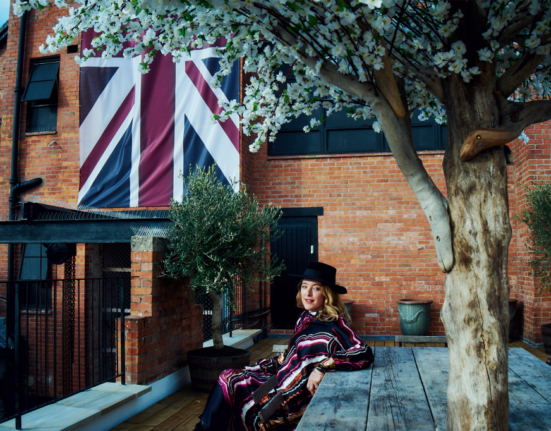Most investors stick to traditional assets like stocks and bonds, usually because they’re comfortable with the familiar. However, adding alternative investments to your portfolio can provide broader diversification, help reduce volatility, and yield higher returns. Art is gaining traction as an alternative investment option—and not just among the ultra-wealthy.
Different types of art to invest in
The art world offers numerous options for investors. The best ones for you depend on your goals, risk tolerance, and interests. Here are a few to consider.
Blue-chip art
Blue-chip art refers to high-value works created by artists with an established history of stability and demand in the art market. These artworks consistently command high prices and become more valuable over time, making them relatively safe investment options for investors and collectors.
“Like with stocks, the more blue-chip the art, the higher the likelihood that a painting or sculpture will hold or even increase in value,” says George Lindemann, Jr., president of the board of The Bass, a prominent contemporary art museum in Miami Beach.
Emerging art
Emerging art is the opposite of blue-chip art. It comes from artists in the early stages of their careers who are not yet established. Emerging art presents an opportunity for higher returns, but it has risks. “Emerging art most often doesn’t emerge,” Lindemann says. There can only be so many Picassos, Rembrandts, or Warhols, he adds, but they, too, were once unknown.
“Of course, like with a tech startup, if you pick an artist who subsequently becomes famous, you can get lucky,” Lindemann says. “The smartest way to buy emerging art is if you love the work or want to help the artist. Then let the future decide whether a market exists.”
Limited edition prints and multiples
Prints and multiples are generally priced lower than one-of-a-kind artworks, offering a more accessible entry point for investors. They’re produced in limited quantities, and are usually signed and numbered by the artist. While not as exclusive as original artworks, prints and multiples can appreciate in value, especially if the edition sells out or the artist’s reputation increases.
5 ways to invest in art
1. Individual artworks
If you’re interested in owning physical art, you can buy works directly through a gallery, auction house, or private art dealer. Choosing a good investment requires in-depth knowledge of the art market, and how works are valued and appraised. It’s helpful to study artists and periods you find exciting, and visit galleries, museums, and auction previews to become more familiar with the artists’ works.
You’ll also want to research the artist’s past market performance and growth potential—and focus on finding something that resonates with you. “It’s better to buy something you love, and maybe it will hold or go up in value,” Lindemann says.
2. Fractional shares of artworks
Platforms including Masterworks let everyday investors access the market through fractional shares of physical artworks by such artists as Banksy, Basquiat, Picasso, and more. Masterworks handles the entire process of researching, buying, securitizing, and storing the artwork. The company then holds the piece for three to 10 years while looking for a good exit opportunity, sells directly to top collectors in the art world, and shares the after-fee proceeds with investors.
3. Art funds
You won’t find any art exchange-traded funds (ETFs) or index funds on traditional investment platforms. However, companies such as Yieldstreet offer funds for investing in diversified pools of artworks by blue-chip, mid-career, and emerging artists with as little as $10,000. Investment decisions are based on third-party appraisals and analysis from a proprietary database managed by Yieldstreet subsidiary Athena Art Finance, which has funded over $400 million worth of fine art investments.
Featured partner
Featured partner
YieldStreet
Fees
0% – 2% (varies by investment type)
4. NFTs
A non-fungible token, or NFT, is a virtual deed conveying ownership of a digital asset created on a blockchain network like Ethereum. Sales and transfers are recorded on the network, producing a verifiable price history and provenance ledger. NFTs experienced meteoric growth just a couple of years ago, with the top NFTs selling for millions and even tens of millions of dollars. However, the NFT market has significantly declined, and it’s unclear if or when the market will recover.
Lindemann says NFTs had a moment, but it’s passed. “Perhaps the most blue-chip of the NFTs will survive over time, but who knows? If you always wanted a particular NFT but could not afford it, now might be a good time.”
5. Art stocks
Another option for investing in art is to buy shares of companies involved in art. However, many art-related stocks are high-risk penny stocks or thinly traded (or both), so they’re often illiquid investments that could be difficult to buy and sell.
Pros and cons of investing in art
Pros:
- Potential for high returns
- Diversification (low correlation with traditional investments)
- Hedge against inflation
- Own a tangible asset you can enjoy every day in your home or office
Cons:
- May not be profitable
- Art is a non-liquid asset
- Storage, maintenance, insurance, and other costs
- No standardized valuation metrics
- Artworks may be counterfeit
More about investing in art
Role of art investments in a portfolio
As an alternative investment that’s uncorrelated to stocks, bonds, and other traditional assets, art can help diversify your portfolio. Diversification spreads your investments across different assets, so a single adverse event can’t wipe out the value of all your assets.
“In today’s volatile market where asset classes are becoming increasingly correlated, investors are seeking diversification to manage risk and protect returns,” says Matt Sutherland, SVP of communications, content, and partnerships at Masterworks. He adds that contemporary art has appreciated more than 11.5% in the nearly 30 years since 1995—compared to about 9.6% for the S&P 500. Still, art “is underrepresented in most investors’ portfolios because it has largely been inaccessible to everyone but the super wealthy,” Sutherland says. Platforms like Masterworks have changed that by creating a fully managed, passive investment vehicle for contemporary art.
Art can also serve as a hedge against inflation: It’s a tangible asset that’s not susceptible to fluctuations in the financial markets. According to the Masterworks All Art Index, contemporary art prices outpace the S&P 500 and other assets like gold during high inflation periods, making it one of the best inflation hedge assets.
When should you invest in art?
It’s difficult to time the market, whether you’re investing in a traditional or alternative asset. A better strategy is to consider your financial situation and how long you intend to hold the art.
Investing in physical art makes the most sense if you have a long time horizon and the capital to buy and properly store, maintain, insure, and potentially restore the artwork. “Building an art collection can cost tens of millions of dollars just for the art itself, not to mention regular appraisals, transportation, and storage that come with managing the physical piece,” Sutherland says.
If you’re looking for a short-term investment—or want to invest a smaller amount—an art fund or fractional ownership might be a better option. “Masterworks allows investors the ability to enter the art market with less capital and without the hassle or unique expertise needed, and still experience the returns collectors have been enjoying for years,” Sutherland says.
Alternatives to art investments
If you decide art investing isn’t right for you, you have other options, including traditional investments and various other alternatives.
Traditional investments
Stocks, bonds, and funds form the basis of many investment portfolios. You can buy and sell shares in a taxable brokerage account or hold your investments in a non-taxable IRA, like Roth IRA accounts.
Alternative assets
Art is but one of many types of alternative assets. To diversify your portfolio, reduce volatility, or seek higher potential returns than traditional investments offer, consider other alternatives including commodities, derivatives, real estate, private equity, or venture capital.
TIME Stamp: Multiples offer a more accessible way to own artworks
Lindemann says that for beginners and experts alike, multiples have a lot of advantages. “Sculptures, prints, and other forms of art that come in a series are a good way to collect. There is often a public record for valuations, and you have a better chance of selling a blue-chip multiple than an emerging artist’s work that never emerged.”
Of course, multiples also have the potential to appreciate in value. “Imagine owning one Andy Warhol print,” Lindemann says. “It wasn’t all that expensive 20 years ago and still had the allure of a famous artist. Today, Warhol prints can sell for six figures or more.”
Frequently asked questions (FAQs)
What are the best art stocks to invest in?
Investing in art-related stocks is possible, but many are high-risk penny stocks or thinly traded. Still, there are a couple of stocks to consider that trade with enough volume to be liquid investments.
- Adobe (Nasdaq: ADBE). Adobe’s graphic design software products, including Photoshop and Illustrator, are used to create and edit digital art.
- Etsy (Nasdaq: ETSY). Etsy is a global marketplace that connects its community of sellers with buyers looking for unique and creative goods, including handcrafted pieces and vintage items.
Is art a valuable investment?
Art often holds or even appreciates in value. “Governments, royalty, nonprofits, and ordinary people have always wanted to own art,” Lindemann says. “This demand gives artwork its monetary value.”
An art investment’s value depends on the prices you initially buy, and eventually sell, the work for. The artist’s reputation, demand for their work, and additional costs—such as transaction fees, storage, maintenance, and insurance costs—influence both. The art market has generally appreciated at a steady rate over time. According to Sotheby’s Mei Moses Index, the annualized average return of the broader art market between 1950 and 2021 (71 years) was 8.5%, slightly below that of the S&P 500.
Of course, art’s value goes beyond the financial. Investing in art for its cultural value and the simple pleasure of owning it can be more rewarding than earning a profit. “Historically, the best art represents a moment in time, a capsule of what a culture looked or looks like,” Lindemann says.





